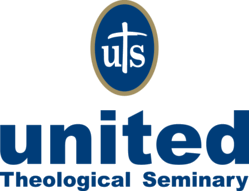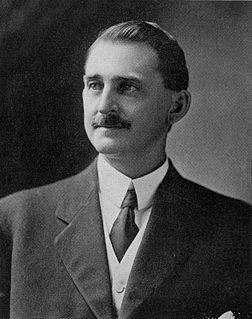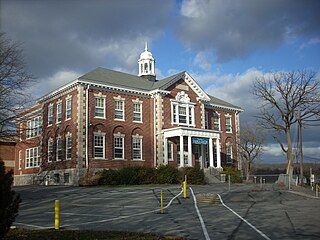The Church of the United Brethren in Christ is an evangelical Christian denomination based in Huntington, Indiana. It is a Protestant denomination of episcopal structure, Arminian theology, with roots in the Mennonite and German Reformed communities of 18th-century Pennsylvania, as well as close ties to Methodism. It was organized in 1800 by Martin Boehm and Philip William Otterbein and is the first American denomination that was not transplanted from Europe. It emerged from United Brethren churches that were at first unorganized, and not all of which joined this church when it was formally organized in 1800, following a 1789 conference at the Otterbein Church.

Mark S. Hanson was the third Presiding Bishop of the Evangelical Lutheran Church in America. Before being elected presiding bishop, he served as bishop of the Saint Paul Area Synod. Prior to being elected Synod bishop, he served as pastor of three Minnesota congregations: Prince of Glory Lutheran Church, Minneapolis; Edina Community Lutheran Church; and University Lutheran Church of Hope in Minneapolis. In addition to serving as Presiding Bishop, Hanson was the 11th President of the Lutheran World Federation.

Jacob Albright was an American Christian leader, founder of Albright's People which was officially named the Evangelical Association in 1816. This church underwent various mergers and schisms and today is a part of the United Methodist Church.

Milton Wright was the father of aviation pioneers Wilbur and Orville Wright, and a Bishop of the Church of the United Brethren in Christ. He had English and Dutch ancestry.
The Evangelical and Reformed Church (E&R) was a Protestant Christian denomination in the United States. It was formed in 1934 by the merger of the Reformed Church in the United States (RCUS) with the Evangelical Synod of North America (ESNA). A minority within the RCUS remained out of the merger in order to continue the name Reformed Church in the United States. In 1957, the Evangelical and Reformed Church merged with the majority of the Congregational Christian Churches (CC) to form the United Church of Christ (UCC).
James Madison Pendleton (1811–1891) was a leading 19th century Baptist preacher, educator and theologian.
John Samuel Stamm (1878–1956) was an American bishop of the Evangelical Church, elected in 1926.
Paul William Milhouse was an American Bishop of the Evangelical United Brethren Church, elected in 1960. When he died at the age of 94 he was the last surviving U.M. Bishop elected by the E.U.B. denomination.
Roy Isao Sano is a retired Japanese-American Bishop of the United Methodist Church, elected in 1984.

W. Maynard Sparks was an American Bishop of the Evangelical United Brethren Church (E.U.B.) and of the United Methodist Church, elected in 1958.
Daniel Kumler Flickinger was an American Bishop of the Church of the United Brethren in Christ, elected in 1885. He was the twenty-fifth Bishop of this Christian denomination, and the first elected to the office of Missionary Bishop.

United Theological Seminary is a United Methodist seminary in Trotwood, Ohio, which is part of the Dayton metropolitan area. Founded in 1871 by Milton Wright, it was originally sponsored by the Church of the United Brethren in Christ. In 1946, members of the Church of the United Brethren in Christ merged with the Evangelical Church to form the Evangelical United Brethren Church, with which the seminary then became affiliated. When that denomination merged with The Methodist Church in 1968, United Theological Seminary became one of the thirteen seminaries affiliated with the new United Methodist Church.
Philip William Otterbein was a U.S. (German-born) clergyman. He was the founder of the United Brethren in Christ, a group that is a forerunner of today's United Methodist Church.
Alfred Taylor Howard was a Bishop of the Church of the United Brethren in Christ, elected in 1913.
Jacob John Glossbrenner (1812–1887) was since 1845 the fourteenth Bishop of the Church of the United Brethren in Christ.

Louis Sylvester Bauman was a Brethren minister, writer, and Bible conference speaker, holding influential leadership in the Brethren Church and the "Grace Brethren" movement which evenly divided the denomination in 1939. He served in several pastorates, in particular the First Brethren Church of Long Beach, California where he was pastor for thirty-four years (1913–1947).
Paul P. Enns is an evangelical Christian pastor, biblical scholar and writer who serves as a full-time minister at Idlewild Baptist Church in Lutz, Florida, and as adjunct professor at Southeastern Baptist Theological Seminary. He is notable as one of the translators of the updated New American Standard Bible and as the author of The Moody Handbook of Theology.
Herman A. Hoyt (1909-2000) was an American biblical scholar. He was one of the founding professors at Grace Theological Seminary in 1937. In 1962, he became president of Grace College and Seminary, a position he held until his retirement in 1976. His area of specialty was New Testament and Greek, but over the years he taught Hebrew, Old Testament, theology, and homiletics. A prolific writer, his work included major expositions of the books of Romans, Hebrews, and Revelation, along with Brethren ordinances and beliefs and eschatology.

Henry Harness Fout was an author and a missionary for the Near East Foundation which aimed to assist Armenian refugees from the Genocide who were dispersed throughout the Middle East. He was one of eighteen commission members returning to the United States from the Near East in 1919, when he reported on the massacre of Armenians.














